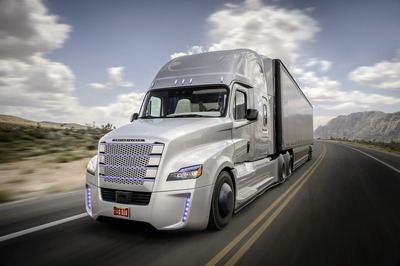A FUNDING GAP IS FORMING
June 14, 2017 Vol. 14 No. 12
Signals out of Washington are not inspiring these days, to say the least. That’s especially true when it comes to the U.S. federal government’s approach to emissions regulations, fuel-economy standards, and in general the technologies that we in trucking have been investigating and anticipating for several years now.
The EPA seems to be in jeopardy, which we’ve known for a while, and the Smartway program looks like disappearing altogether. The new administration’s
proposed 2018 budget confirms the trouble we’re in — it slashes the Department of Energy’s Vehicle Technology program funding, reducing it from US$310 million in 2016 to just US$82 million. The program funds early-stage, high-risk research to generate knowledge that industry can use to develop transportation technologies.
That’s a big cut, and it would include terminating funds for the Clean Cities program, perhaps the most important single component. It’s focused on research and development of technologies like batteries, advanced natural gas engines, and biofuels. There’s no doubt that government funding in these and other corners has been crucial to finding cleaner, more efficient ways to move goods around cities, and people as well. Cutting off that funding stream shows, at the very least, a sorry lack of vision.
Aside from Clean Cities, big budget cuts relative to 2016 involve Battery and Electrification Technologies, down by 74%, to $36.3 million, and Materials Technology by 72% to a paltry $7.5 million
Clean Cities? well, it’s going to be gutted, with funding dropping from $48.4 to 4 million.
 The budget is not yet a firm thing, still to go to Senate and House committees for review and revision.
The budget is not yet a firm thing, still to go to Senate and House committees for review and revision.
And if by any chance you think this is just an American issue, think again. The policies may be national but the effect is extra-national.
BUT HYDROGEN GETS A LITTLE funding in spite of all that. Last week the U.S. Department of Energy (DOE) announced US$15.8 million for 30 new projects aimed at discovery and development of novel, low-cost materials necessary for hydrogen production and storage and for fuel cells on board light-duty vehicles. Selected projects will leverage work done under DOE’s Energy Materials Network (EMN) this past year.
Note, we’re talking a focus on light-duty vehicles here, but the technology is in large measure common to heavy-duty vehicles.
More than 2000 fuel cell vehicles have been sold or leased in the U.S. since 2015. They consume 95% less petroleum per mile than conventional internal combustion engine vehicles, have no tailpipe emissions, and offer quiet operation.
The selected EMN projects will leverage world-class capabilities at the national laboratories, facilitating collaborations that will expedite the development of advanced materials.
Good news this may be, but $15.8 million is pretty much a drop in the bucket.